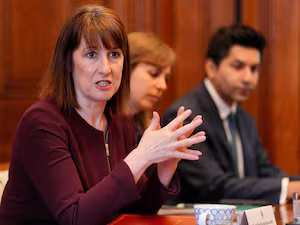Move over Doctor Who: Physicists create a ‘time machine’
A quantum computer experiment appears to turn around ‘time’s arrow’ and defy the second law of thermodynamics.

It may not quite be the Tardis, but scientists have built what could loosely be described as a time machine.
In an experiment that would have challenged Doctor Who, researchers defied the second law of thermodynamics, which governs the direction of “time’s arrow” from past to future.
Working in the weird realm of quantum mechanics, they achieved the equivalent of causing a broken rack of pool balls to re-order itself.
It was as if the balls scattered randomly around a pool table went into reverse and packed themselves back into their original pyramid formation.
To an outside observer, it looks as if time is running backwards.
Lead researcher Dr Gordey Lesovik, who heads the Laboratory of the Physics of Quantum Information at the Moscow Institute of Physics & Technology (MIPT), said: “We have artificially created a state that evolves in a direction opposite to that of the thermodynamic arrow of time.”
The “time machine” described in the journal Scientific Reports is based around a quantum computer that carries out calculations using basic elements known as superconducting “qubits”.
A qubit is a unit of information described by a “one”, a “zero”, or a mixed “superposition” of both states.
The same kind of effects happen in nature with sub-atomic particles such as electrons occupying more than one state at a time until they are observed or disturbed.
An electron’s physical position is defined by uncertainty, meaning that instead of being a concrete “point” it is a fuzzy state of probabilities smeared across a region of space.
For the study the scientists borrowed IBM’s “Q Experience” experimental public quantum computer, whose circuits mimic the strange behaviour of sub-atomic particles.
In the experiment an “evolution program” was launched which caused the qubits to become an increasingly complex changing pattern of zeros and ones.
During this process, order was lost – just as it is when the pool balls are struck and scattered with a cue.
Uncertainty ruled the system as it does when an electron is “smeared out” over an increasingly large region of space, or balls fly randomly to different corners of a pool table.
Another program then modified the state of the quantum computer in such a way that it evolved “backwards”, from chaos to order.
The state of the qubits was rewound back to its original starting point.
An analogy would be giving the pool table such a perfectly calculated kick that the balls roll back into an orderly pyramid.
The scientists found that, working with just two qubits, “time reversal” was achieved with a success rate of 85%.
When three qubits were involved more errors occurred, resulting in a 50% success rate.
The experiment could have a practical application in the development of quantum computers, the scientists said.
“Our algorithm could be updated and used to test programs written for quantum computers and eliminate noise and errors,” said Dr Lesovik.





